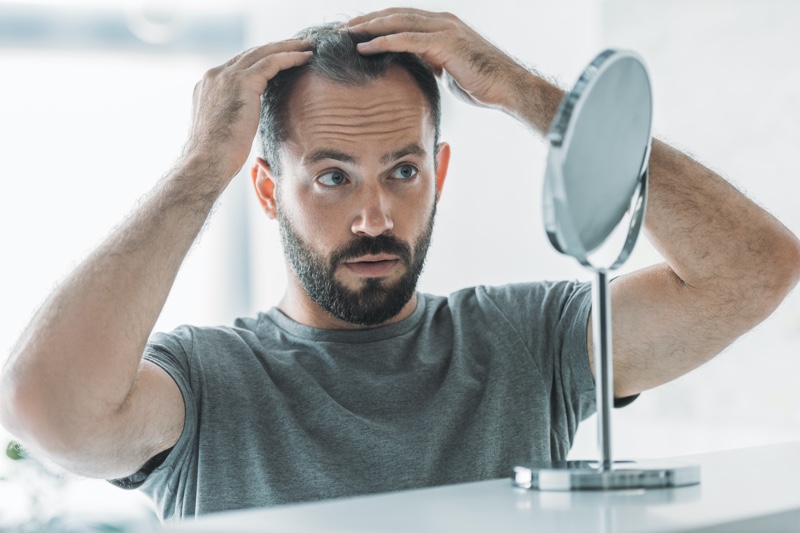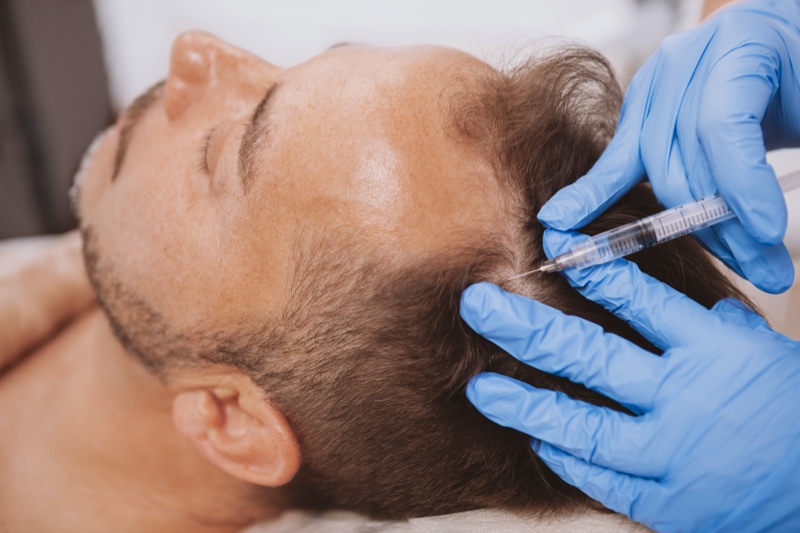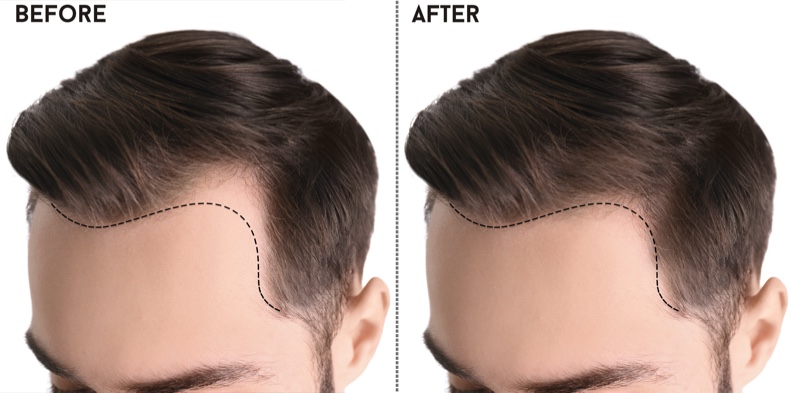
The subject of hair loss is an experience commonly associated with females, with many well-known solutions, including wigs, hair extensions, and beauty products developed with a female audience in mind. Men are traditionally left out of these conversations and are not often considered a target audience for companies and healthcare providers aiming to bring hair loss and thinning solutions to market. Nonetheless, anyone can experience hair loss; it more commonly occurs in men.
There are many causes for hair loss, including heredity traits, hormonal changes, medical conditions, or just simply a normal part of aging. According to the Mayo Clinic, more than 80 percent of men experience significant hair loss. It is essential to check with your doctor if you are experiencing persistent hair loss and want to explore treatment options. Early detection and diagnosis are crucial to begin a proper treatment regimen for any medical condition.
Myths & Misconceptions
There are many myths and misconceptions about hair loss and transplants; most are based loosely on outdated information or are perpetually repeated facts that have gone unchecked. Hair transplant surgery has come a long way from its early days. According to the American Board of Cosmetic Surgery, newer technologies and hair restoration procedures (surgical and non-surgical) have a high patient satisfaction rate and more natural-looking results.

The options are safe and plentiful, from medications used in the early stages of hair loss and surgical procedures, including follicular unit transplant (FUT) and follicular unit extraction (FUE), to minimally invasive hair restoration techniques you work with a qualified physician.
Below we address some of the top misconceptions associated with hair transplant surgery.
Hair Transplants Will Turn Me Into a Scary, Horror Movie Doll
The phrase “plugs” comes from an old hair transplantation technique that took large “plugs” of hair and transplanted them in circular groupings in areas of need, resulting in a final post-op look reminiscent of many dolls from the 80s, typically those in horror flicks. This technique is outdated and not recommended; given newer technologies and processes, a hair transplant will not leave patients looking like Frankenstein.

Hair Transplants Are Only for Younger People
Research conducted by experts shows that the average age of a hair transplant patient is between 30 and 40. Many older people believe they are not prime candidates because of their age, but age is not a contraindication for hair transplantation. As people age, they lose more hair, so while there may be less hair to extract and a more extensive area requiring transplanted follicles, people in their 60s and 70s can still qualify for a transplant. However, health conditions would make someone a non-candidate, so checking with your doctor first is essential.
Using Different Hair Types Looks Bad
Not true! According to the University of Pennsylvania’s Penn Medicine, transplanted hair (grafting) from around the sides and back is genetically different from the hair on the top of the head, which is permanent once transplanted to the top. A transplanted follicle is blended with the existing native hair, and it is the native hair that is still susceptible to the thinning and falling out process.
Many people opt for a second transplant in the years following a transplant as they continue to lose native hair surrounding the original transplant. Therefore, in standard post-op care, it is always recommended to keep up with additional regiments and treatments for hair loss like finasteride, PRP, minoxidil, or laser therapy. Furthermore, grafting is considered a more effective and permanent solution to hair loss restoration than today’s treatments.

Honorable Mentions
In addition to the three misconceptions detailed above, other common fallacies about hair loss and transplants include:
- Wearing hats can often cause hair to fall out – nope, not true. Hats have zero effect on hair loss, so keep wearing whatever headgear you like.
- It’s all your mother’s fault! No, it’s not. You can blame both genetic sides or a sour mix from both parents.
- Don’t shave that head! Why not? If that is a look you want to explore, go ahead. Shaving your head will not make you go bald or cause hair loss. This has no effect at the follicular level, where thinning and loss occur.
- Stop washing your hair so much; it’ll cause hair loss!! Wrong! Washing your hair may dry out your scalp, making a hostile environment to grow hair, but it will not fall out.
Access to Care
There are many options on the market for hair loss restoration, and the global hair loss treatment industry hit $3.4 billion last year and is expected to increase throughout 2022. There is currently no cure for baldness. However, many research groups and facilities worldwide have reported initial successes using stem cells to promote hair regrowth, a promising method we hope to see develop and be accessible to the public once proven to be safe.
Although the scientific community is tirelessly researching ways to cure baldness, many treatment options are already available to those suffering from hair loss and thinning. Solve Clinics is a Chicago-based skin restoration and hair transplant clinic offering procedures and treatments for men and women to address and fix their hair loss.
One of the clinic’s signature treatment programs is Follicular Unit Extraction (FUE). This permanent hair loss solution is scarless, pain-free, and has a short recovery time compared to more dated hair transplant procedures. Solve Clinics has one of the nation’s leading FUE transplant teams with over 40 years of combined experience and offers a white-glove concierge service approach to patient services, including travel reimbursement and financing options.
Additionally, Solve Clinics utilizes platelet-rich plasma (PRP), an increasingly popular and natural treatment option for hair loss. This procedure involves reinjecting a patient’s platelet-rich plasma back into the scalp. Platelets contain growth factors released around the hair follicles, improving hair density and preserving thinning hair. This procedure involves reinjecting a patient’s platelet-rich plasma back into the scalp.
If the time comes to address hair loss, don’t stress. Speak with your doctor, conduct your research, and move forward boldly and confidently.




